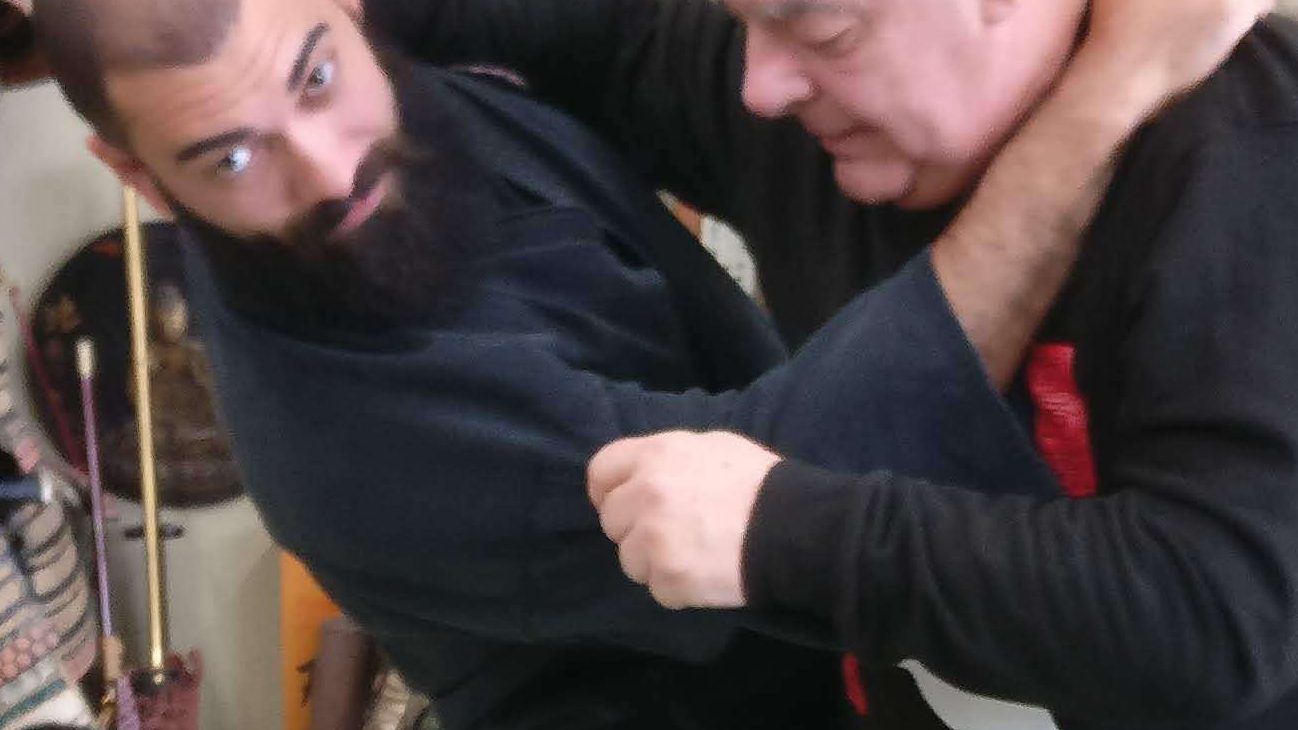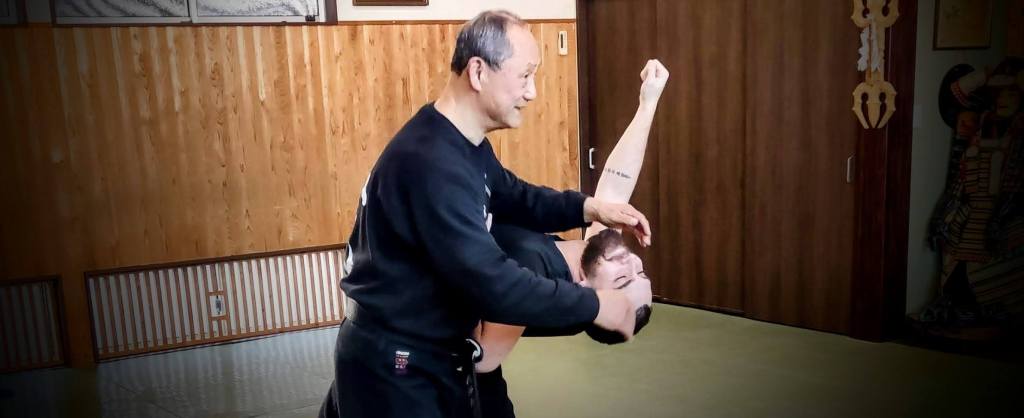Mawari: Dancing With Nagato
From Shiro Kuma by kumablog

During the class, we began with taijutsu and ended with hanbō jutsu. In both cases, the Kaname, or key point, was Mawari, to turn around the opponent softly but without stopping. (1)(2)
This permanent motion around him prevents uke from answering to a specific action. When Nagato sensei was walking around the attacker, you could see the opponent gradually losing his balance.
There were too many potential attacks coming in succession; it was, therefore, impossible for the attacker to take back the initiative. Uke could only react defensively. In a way, Nagato sensei’s movements trapped him in a spiderweb of possibilities.
Once again, he stressed the importance of having proper basics. When adequately executed, each fundamental technique of the Tenchijin acts as an excuse to “play” with the attacker. Each basic movement is like a title on a blank page. Then, your creativity kicks in, and you destroy the opponent’s initial intent. Sensei was also switching sides continuously, going from left to right and back, while turning around uke (mawari). This was confusing uke’s attacks.
When moving around the attacker, Nagato sensei emphasised the importance of matching the distance to the uke’s attacks. He added that there could be a knife hidden in the other hand. Therefore, he was always out of reach during the attack and then stepped in once the attack ended. While consistently positioning his elbows in the process and using them as leverage. (3) This use of a fulcrum and leverage, teko shiten, is a major kaname of the Kukishin and Takagi Yōshin. (4)
By transitioning from one basic to another, but always staying in a basic kamae, you can apply any technique. Nagato sensei was like a cat playing with a mouse. He never finished a movement but used the uke’s reactions to apply another basic. In the process, Nagato sensei did various versions of Ganseki (Nage, Oshi, Otoshi), Oni Kudaki, Musō Dori, and Gyaku Musō Dori. Going from one to the other in a permanent flow, he was always well-positioned to do one waza or another. That was nice to watch, maybe less nice for the uke.
During the break, my friend Peter Meden reminded me of another interesting technical point that I missed. Nagato sensei showed him that, depending on the angle of the grip of the attack, the angle of the grip determines one or more basic waza. The c-shaped grip can be a wrist grab in Ura or Omote, or it can even be a direct grab of the fist. This can be done from above or from below (U-shape). These multiple soft ways of controlling the uke, in combination with a Mawari action of the legs, make it easy to overcome the attacker.
This technical approach (Mawari and grip) was applied in the last part of the class dedicated to Hanbō jutsu. Nagato sensei said, “Hanbō jutsu is simple; don’t overthink it!”
The only difference when using a hanbō is that you have to increase the distance to stay out of reach. I was surprised that many practitioners that night, and some with high ranks, had no clue about the hanbō basics. I had the feeling that Hanbō jutsu was new to them! (5)(6)
Nagato sensei said that you have to “dance with uke and the weapon”, and the Mawari motion looks similar to some demonic dance. To improve your taijutsu, don’t have preconceived ideas; wait for the attacks and unfold the possibilities as they appear before you. Watching Nagato sensei dancing with his partner, I was happy that we were friends and not enemies.
______________________
Don’t forget to register for the Paris Nagato Taikai at the end of the year. That is an opportunity to train with a great teacher. https://facebook.com/events/s/nagato-taikai-paris/1682157225737627/
______________________
- Kaname, 要, key point, pivot, vital point; cornerstone; keystone
- Mawari, 周り, circumference, perimeter
- Hiji, 肘, elbow: The use of the elbows in every technique is Nagato sensei’s “signature move”. It took me years to acquire it, but once you have it, it becomes a great aid to your taijutsu.
- Teko, 梃子, lever and Shiten, 支点, Fulcrum are important concepts taught within the Kukishin and the Takagi Yōshin.
- In the past, the Hanbō was the only weapon Hatsumi Sensei taught. This weapon, invented in the 19th century, is the best to introduce buki jutsu (weapons) to our beginners.
- You can get all Hanbō basics on www.koimartialart.com, an Online streaming platform in English with 160 GB of videos.







